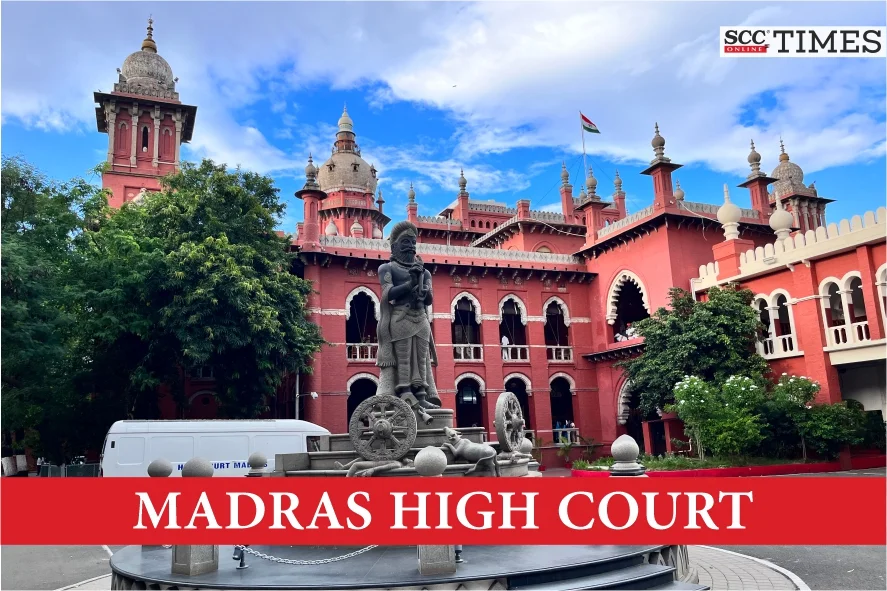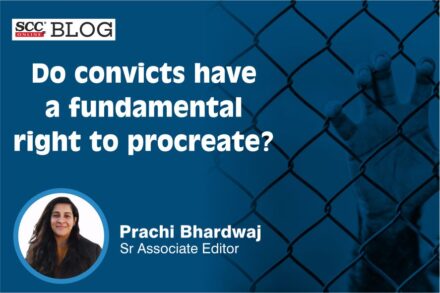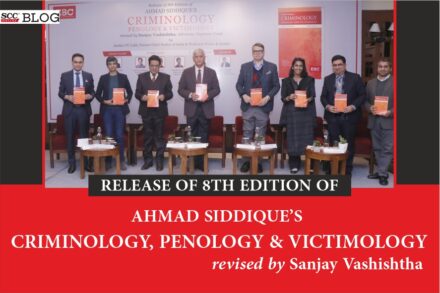Madras High Court: In a petition filed by United India Insurance Company Ltd. (‘UIIC’)praying for quashing the notice issued by the Chennai Metro Rail Limited (‘CMRL’) under Section 3(2) of the Tamil Nadu Acquisition of Land for Industrial Purposes Act, 1997 (‘the Act’), calling upon the petitioner to show cause within 30 days as to why the property should not be acquired, the Single Judge Bench of N Anand Venkatesh, J. quashed the impugned notice, and allowed CMRL to proceed with its original intended plan immediately, by having the Metro Station within the premises of Arul Mighu Sri Rathina Vinayagar and Durgai Amman Temple.
Background
UIIC has constructed a new head office with a unique double curvature profile, which has received a three-star green building certification. Necessary approvals were obtained from the Chennai Metropolitan Development Authority (‘CMDA’) and a No Objection Certificate (‘NOC’) from CMRL, as the building is within a 50-meter radius of the Phase II project route map.
A public interest litigation (PIL) filed led to a decision to shift the Metro Station’s entry/exit point to the UIIC’s building. Based on an undertaking by CMRL’s Standing Counsel, the PIL was disposed of on 08-08-2024, and the impugned notice has been issued.
CMRL have filed a counter-affidavit, stating that a revised land acquisition plan for the Metro Station, involving some land from UIIC, was approved and published in a public notice on 27-09-2024. The notice called for a public hearing on 29-10-2024. They argued that UIIC had ample opportunity to object to the acquisition but filed the writ petition directly. Furthermore, they contend that the NOC from CMRL was only for Phase I, and the proposed land acquisition is vacant land without superstructures.
CMRL also highlighted that any underground utilities disturbed during the project would be reinstated, emphasizing that the project is of public importance and should not be stalled by UIIC. They have requested the dismissal of this writ petition.
Issue
Whether the revised decision to proceed against the property of UIIC is precluded by the principle of promissory estoppel and smacks of unfairness amounting to an abuse of power.
Analysis and Decision
The Court said that all the Authorities have made UIIC believe that the project will not cause any disturbance to the proposed construction and as a result, UIIC has spent huge sums of money running into crores to put up the building.
The Court reiterated that all power, executive or legislative, must be used transparently and in a non-arbitrary manner. The central tenet of Article 14 of the Constitution of India is non-arbitrariness in decision making, the principle being traceable to the rule of law.
The Court said that the principle of promissory estoppel has, over the years, emerged as a useful tool in the armory of judicial review to control State action. Referring to Union of India v Anglo Afghan Agencies, AIR 1968 SC 718, the Court highlighted that it is undeniable that UIIC sought a no-objection for construction from the CMRL, which was considered and granted. Thereafter, the CMDA has also considered and approved the building plan. Acting on the no-objection of the CMRL and the approval of the CMDA, UIIC has pumped more than 200 crores of public money and put up a superstructure. Thus, all the elements of promissory estoppel stand satisfied.
The Court observed that CMRL had issued a representation stating that the lands are no longer required for the metro project. It further noted that the CMDA, by granting approval, had induced UIIC to invest funds.
The Court remarked that allowing the CMDA and CMRL to take a different stance at this point, especially based on proceedings in which UIIC was not even a party, would be grossly unfair and arbitrary. The Court emphasized that this would amount to an abuse of power, violating Article 14 of the Constitution, as the consent given by the CMRL before the First Bench could not bind UIIC, as it was not made a party to the proceedings nor was it heard before such orders were passed.
Examining whether the principle of promissory estoppel can be defeated by any of the usual defences of the State, the Court rejected the argument that that promissory estoppel cannot found a cause of action as laid down in Motilal Padampat Sugar Mills Co. Ltd. v. State of U.P., (1979) 2 SCC 409.
The Court found the argument that estoppel cannot be applied against the State in the exercise of its sovereign functions, particularly its power of eminent domain while acquiring lands for public purposes, to be fallacious.
The Court underscored that there could be no dispute that the petitioner had relied on the NOC issued by the CMRL and the planning approval granted by the CMDA. Based on these representations, the petitioner had expended funds for construction, thereby fulfilling the requirements of reliance on the acts and representations of the authorities.
In light of the decision in State of Punjab v Nestle India Ltd. (2004) 6 SCC 465, the Court rejected the argument that the principle of promissory estoppel is solely a concept of private law and has no application in public law disputes.
The Court opined that to allow the CMDA and the CMRL to casually resile from its earlier position would be so grossly unfair and arbitrary so as to violate Article 14 in all its hues. The fact that all this was achieved based on a writ petition, to which,UIIC was not even made a party, makes the position even worse.
Noting that a spot inspection was carried on by the Judges of the First Bench of this Court and a decision was, thereafter, taken to shift the original site of the station to the site of UIIC, the Court remarked that “the inspection that had taken place, without notice to UIIC right under its nose, sets up an impregnable defence of patent violation of the principles of natural justice”.
The Court stated that if the alternative plan had been proposed by the CMRL based on the advice of technical experts, without any intervention from the Aalayam Kaapom Foundation (‘Foundation’) through a PIL, it would have directed UIIC to submit their objections, and there would have been no question of interfering with the notice issued under Section 3(2) of the Act. The earlier site had been chosen and finalized by a team of technical experts, who prioritized safety and convenience. The Court noted that the impugned notice had arisen due to the intervention of the Foundation through the PIL, which led to the CMRL revising its stance and altering the proposal to shift the site. Thus, the Court observed that the considerations for shifting the site were not solely motivated by considerations of safety, convenience and other purely technical factors, which were examined in the earlier plan. The very basis of the notice under Section 3(2) of the Act appears to be founded on the premise that by shifting the site, the sentiments of the devotees, of which the Foundation allegedly claims to represent, need not be disturbed.
Are lands belonging to religious institutions exempt from land acquisition or is there any special consideration, which must be bestowed by the Authorities while acquiring those lands?
After noting various precedents, the Court reiterated that the acquisition of lands belonging to religious institutions, in exercise of the State’s power of eminent domain, is a permissible exercise, which does not violate any of their fundamental rights under Article 25 or 26 of the Constitution.
The Court concluded that the impugned notice is vitiated as it violates Article 14 of the Constitution by breaching the principle of promissory estoppel. The illegality is further compounded by the fact that the notice is a fait accompli intended to effectuate a statement made before the First Bench of this Court in the PIL filed by the Foundation, to which UIIC was not a party.
The Court remarked that “the Foundation, CMRL, and State Authorities appear to have staged their Hamlet, without the Prince of Denmark”
The Court pointed out that Section 3(2) of the Act does not envisage a post-decisional hearing, or a hearing that is merely a farce. While premeditation is difficult to prove, the facts here clearly show that the statement made before the First Bench of this Court demonstrates that Section 3(2) of the Act has been misapplied. Consequently, the Court found a gross failure of natural justice at all levels.
The Court stated that it would be completely contrary to public interest to demolish a building, or portions thereof, of a recently constructed structure built at a cost of Rs. 200 crores by a public sector entity, after obtaining all necessary clearances and the NOC from the CMRL, especially when the decision is based on a proceeding conducted entirely behind its back. Allowing such an action by the CMRL would constitute an egregious misuse of the power of acquisition and would be so grossly unfair and arbitrary that it could only be described as an “abuse of power” under Article 14 of the Constitution of India.
[United India Insurance Company Ltd.v. State of Tamil Nadu, 2025 SCC OnLine Mad 1404, decided on 11-03-2025]
Advocates who appeared in this case :
For Petitioner: Mr.Vijay Narayan, SC for Mr.Keerthikiran Murali
For Respondents: Mr.P.S.Raman, AG, Mr.A.Selvendran, SGP, Mr.B.Vijay, Standing Counsel, Mrs.P.Veena Suresh, Standing Counsel, Mr.Ramamoorthy







